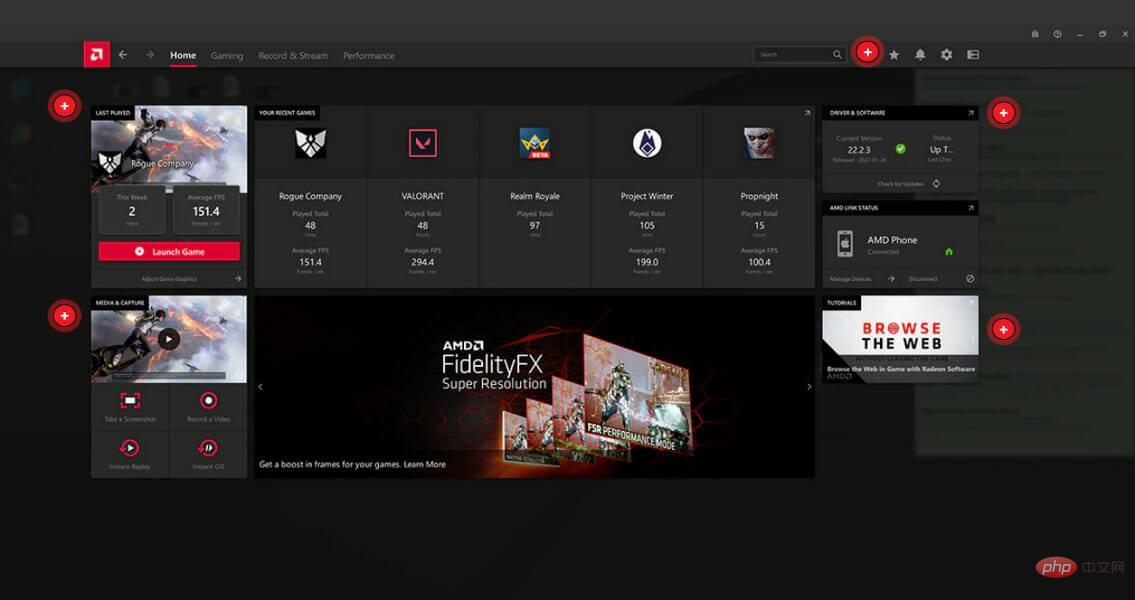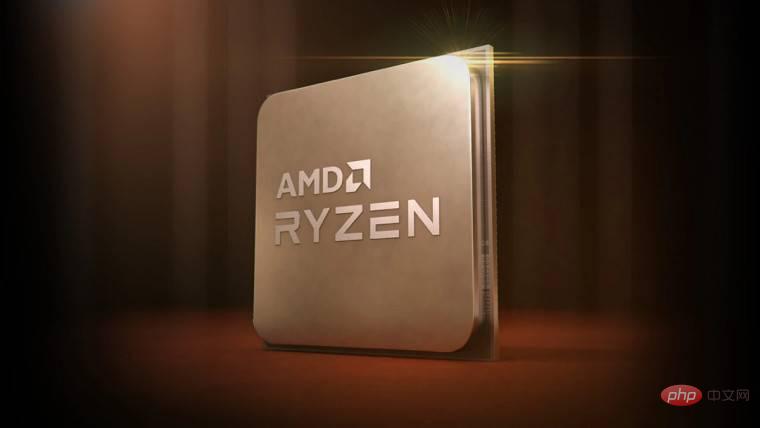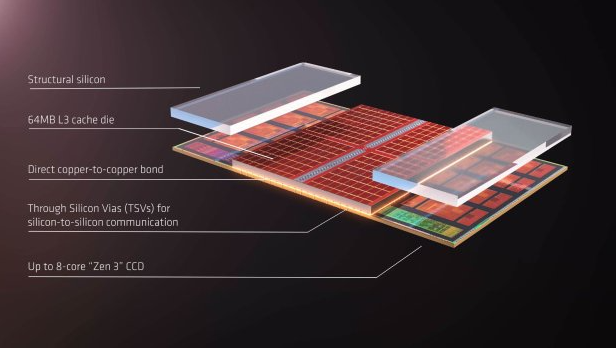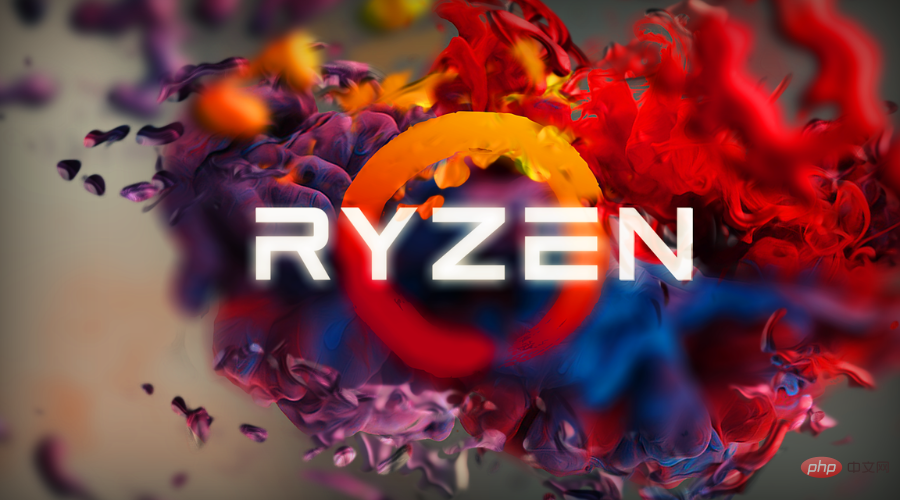 硬件教程
硬件教程 硬件新闻
硬件新闻 Cyberpunk 2077 AMD FSR 3 disappoints with severe image quality degradation, shimmering, and blurry textures
Cyberpunk 2077 AMD FSR 3 disappoints with severe image quality degradation, shimmering, and blurry textures
CD Projekt Red recently added AMD FSR 3 with Frame Generation to Cyberpunk 2077, and, although it presented an exciting bump in frame rates — especially for handheld gamers — side-by-side testing reveals that not everything is coming up roses for AMD's FSR upscaling and Frame Generation in Cyberpunk 2077.
There are a handful of side-by-side tests with different hardware configurations. Steam Deck Gaming on YouTube provides the most thoughtful look at the performance of Cyberpunk 2077 patch 2.13 and FSR 3 with Frame Generation on the Steam Deck — arguably where the performance gains are most useful. In his performance testing, FSR 3 with Frame Generation managed to net a decent performance uplift — from around 30–35 fps using FSR 2.1 to around 45–55 fps using FSR 3 and Frame Generation.
Curiously, in Cyberpunk 2077, different parts of the map seemed to react differently to FSR 3 and FG. While there were some areas of the map that suffered from severe image quality degradation, the urban environments generally saw the least visual artefacts. In his testing, FSR 3 Native with Frame Generation and low graphics settings actually seemed to strike the best balance between visual quality and frame rate, with the game settling at around 50 fps with reasonable image quality.
Of course, AMD's FSR 3 and its Frame Generation are both hardware-agnostic, which allowed 54 FPS and MxBenchmarkPC on YouTube to test the upscaling tech with an Nvidia GeForce GTX 1650 and GeForce RTX 3080, respectively. The GTX 1650 also saw some impressive frame rate gains, with FSR 3 and Frame Generation resulting in around 60–85 fps, compared to 25–45 fps in 1080p native. Much like the testing with the Steam Deck, however, FSR did result in some flickering and shimmering in-game objects and blurry edges when moving at high speeds.
The RTX 3080 saw a similar performance uplift, with 1440p testing with FSR 3 and Frame Generation reaching around 71–75 fps, compared to just 40 fps with FSR 2.1 enabled. However, the same shimmering is present on reflective surfaces and foliage. At 4K with FSR 3 Performance mode, ray tracing, and Frame Generation enabled, the RTX 3080 was able to reach around 45–53 fps. Using Nvidia's DLSS 3.7 in Performance mode and with ray tracing on Ultra, the RTX 3080 was able to reach similar frame rates with objectively better image quality, making FSR a hard sell for those with Nvidia hardware.
Not only was performance disappointing on slower hardware, like the AMD Radeon iGPU in the Steam Deck, with serious visual artefacts, there were also some bugs spotted by Steam Deck Gaming, mostly pertaining to using cars and motorcycles in the game. It's unclear if and when CD Projekt Red will update FSR 3 to FSR 3.1, but FSR 3.1 has promised further visual and performance improvements, compared to the previous implementations.
It is interesting, however, that the problems with the graphics caused by FSR 3 are also present when using FSR 2.1, and using FSR 3 does net significant performance gains, which is a step in the right direction for those that were already reliant on features like FSR 2.1 to get playable frame rates.
Check out the AMD-powered Lenovo Legion Go Windows gaming handheld (curr. $679.99 from Lenovo US).
▶ load Youtube video▶ load Youtube video以上是Cyberpunk 2077 AMD FSR 3 disappoints with severe image quality degradation, shimmering, and blurry textures的详细内容。更多信息请关注PHP中文网其他相关文章!
 修复:Windows 11 中未安装 AMD 显卡驱动程序错误May 03, 2023 am 09:13 AM
修复:Windows 11 中未安装 AMD 显卡驱动程序错误May 03, 2023 am 09:13 AM在配备AMDGPU的Windows11PC上出现未安装AMD显卡驱动程序错误。这是某些用户在选择AMDRadeon设置上下文菜单选项时发生的错误。弹出此错误消息,而不是打开AMDRadeon设置:未安装AMD显卡驱动程序,或AMD驱动程序无法正常运行。请安装适合您的AMD硬件的AMD驱动程序。该错误消息突出显示了AMD图形驱动程序的问题。这通常意味着PC具有过时、不兼容或损坏的AMD驱动程序。这是您可以修复Windows11中未安装AMD
 AMD RX 7800M XT在3DMark测试中获得高分,可与桌面端RTX 4070媲美Jun 07, 2023 pm 11:45 PM
AMD RX 7800M XT在3DMark测试中获得高分,可与桌面端RTX 4070媲美Jun 07, 2023 pm 11:45 PM6月7日消息,根据最新报道,AMD公司的移动显卡AMDRadeonRX7800MXT首次公布了其在3DMark跑分测试中的成绩,显示该显卡性能将超越上一代的RX6800。据可靠消息源透露,还有其他基于Navi32核心的AMD移动显卡规格被曝光,这也是用于AMDRadeonRX7700/7800系列的Navi32芯片首次亮相。从跑分结果来看,在TimeSpy测试中,AMDRX7800MXT获得了17842的分数,与桌面端的RTX4070显卡的表现相当(IT之家注:RTX4070分数为17736,而
 amd radeon software是什么Feb 21, 2023 am 11:58 AM
amd radeon software是什么Feb 21, 2023 am 11:58 AMamd radeon software是显卡的驱动程序,是用于Advanced Micro Devices的显卡和APU的设备驱动程序和实用程序软件包。Radeon Software驱动不只是包含显卡驱动程序,实际上还包含设置及问题报告向导、HDMI音频驱动等,如果不想对显卡做各种设置。除了识别显卡信息,Radeon Software还能识别显示器并提供丰富的显示器设置功能。
 怎样从 Windows 11 下载 AMD 显卡驱动程序May 09, 2023 pm 09:52 PM
怎样从 Windows 11 下载 AMD 显卡驱动程序May 09, 2023 pm 09:52 PM使用图形处理单元(GPU)或显卡在Windows11计算机上显示图形。因此,今天我们将了解如何在Windows11上下载AMD显卡驱动程序。内置的任务管理器软件是确定您的计算机正在使用哪个显卡以及当前使用了多少电量的最简单、最准确的方法。跟随我们将首先看看如果您从PC中删除AMD软件会发生什么,然后跳转到您可以在Windows11设备上下载图形驱动程序的方法列表。如果我删除AMD软件会怎样?AMDRadeon设置是主要的驱动程序界面,允许用户更改图形驱动程序的许多
 由于 fTPM 错误,AMD PC 在 Windows 10 和 11 上出现卡顿,临时解决方法May 13, 2023 pm 07:04 PM
由于 fTPM 错误,AMD PC 在 Windows 10 和 11 上出现卡顿,临时解决方法May 13, 2023 pm 07:04 PM一两个月以来,AMD的Ryzen处理器被发现在启用固件TPM(fTPM)的Windows10和11系统上卡顿(通过Reddit)或冻结。今天,AMD在确定导致这些问题的原因后发布了一份公告。据该公司称,挂起和卡顿是由串行外设接口(SPI)闪存ROM内的扩展内存事务操作引起的。AMD已确定,选定的AMDRyzen™系统配置可能会间歇性地在位于主板上的SPI闪存(“SPIROM”)中执行与fTPM相关的扩展内存事务,这可能导致系统交互性或响应性暂时暂
 突破性的AMD原型处理器亮相:锐龙9 5900X3D震撼亮相Jun 20, 2023 pm 03:55 PM
突破性的AMD原型处理器亮相:锐龙9 5900X3D震撼亮相Jun 20, 2023 pm 03:55 PM6月20日消息,近期,AMD在其奥斯汀总部向少数媒体展示了一款令人惊叹的原型产品,名为“锐龙95900X3D”。这款处理器采用了最新的3DV-Cache缓存技术,为AMD的锐龙产品线带来了显著的性能提升。据了解,这款“锐龙95900X3D”处理器集成了12个Zen4核心和128MB的3D缓存。在Windows任务管理器中,该处理器显示出192MB的三级缓存(128MB3D缓存+64MB原生缓存),以及6MB的二级缓存和768KB的一级缓存,总共达到了198.75M
 AMD发布Ryzen 7000系列新成员:Ryzen 5 7500F处理器Jul 20, 2023 pm 12:01 PM
AMD发布Ryzen 7000系列新成员:Ryzen 5 7500F处理器Jul 20, 2023 pm 12:01 PM7月11日消息,据知情人士透露,AMD公司计划在中国市场推出一款全新处理器型号,名为AMDRyzen57500F。该处理器被认为是Ryzen7000系列中的一员,相较于Ryzen57600,7500F不包含集成的核显。这一消息显示,AMD将首先在中国发布Ryzen57500F处理器,并且暂无计划将其引入美国市场。AMDRyzen57500F处理器采用了Ryzen7000系列的制造工艺,而非像Ryzen57600一样采用了APU芯片。据了解,该处理器将于本月底面向中国市场的零售商和电商平台发布,并
 2022 年 12 月星期二补丁日触发 AMD 锐龙 PC 上的冻结问题Apr 13, 2023 pm 07:28 PM
2022 年 12 月星期二补丁日触发 AMD 锐龙 PC 上的冻结问题Apr 13, 2023 pm 07:28 PM以防万一您还不知道,11 月的周二补丁日更新修复了与大多数 AMD 处理器上的 Spectre 变体 2 相关的安全漏洞。话虽如此,12 月的下一次跟进,即 2022 年的最后一次跟进,显然在配备 AMD CPU 的系统上并不是最好的。为什么?好吧,因为一些用户报告了其AMD Ryzen系统上的冻结问题。这似乎发生在带有KB11更新的Windows 11 22H2上5021255。Windows 11 版本 22H2 上出现问题老实说,这不是微软第一次或最后一次使用旨在实际改进它的补丁来破坏系统


热AI工具

Undresser.AI Undress
人工智能驱动的应用程序,用于创建逼真的裸体照片

AI Clothes Remover
用于从照片中去除衣服的在线人工智能工具。

Undress AI Tool
免费脱衣服图片

Clothoff.io
AI脱衣机

AI Hentai Generator
免费生成ai无尽的。

热门文章

热工具

SublimeText3汉化版
中文版,非常好用

PhpStorm Mac 版本
最新(2018.2.1 )专业的PHP集成开发工具

EditPlus 中文破解版
体积小,语法高亮,不支持代码提示功能

螳螂BT
Mantis是一个易于部署的基于Web的缺陷跟踪工具,用于帮助产品缺陷跟踪。它需要PHP、MySQL和一个Web服务器。请查看我们的演示和托管服务。

适用于 Eclipse 的 SAP NetWeaver 服务器适配器
将Eclipse与SAP NetWeaver应用服务器集成。




